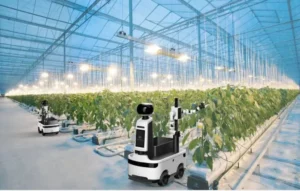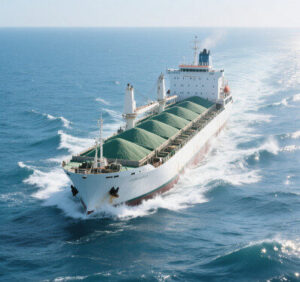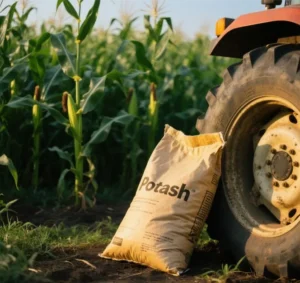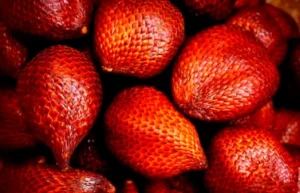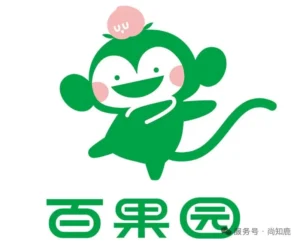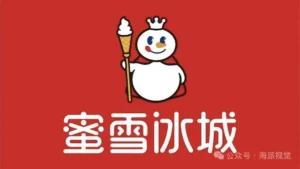Xinjiang, a pivotal agricultural region in Northwest China, has emerged as a focal point for agribusinesses due to its expansive farmland, diverse crop structure, and unique climatic conditions. Xinjiang is the fifth-largest province in China in terms of cultivated land, covering 7.06 million hectares. The region supports a wide array of crops and presents a compelling landscape for agricultural input markets. This paper explores the potential of the agricultural inputs market in Xinjiang, examining its scale, diversity, key crops, and the challenges and opportunities in the fertilizer and pesticide sectors. It focuses on specific enterprise case studies and market share data.
1. Agricultural Scale and Diversity
Xinjiang’s agricultural landscape is marked by its diversity, which has a notable impact on the demand for various agricultural inputs. The region’s crop structure includes grain crops such as wheat, economic crops like cotton, fruits, and vegetables, as well as specialty products such as grapes, Hami melons, and pomegranates. As of 2024, the planting area distribution reflected a balanced mix, with cotton occupying 33%, corn 22%, wheat 16%, and other crops covering 26%. This diversity ensures a stable agricultural economy and drives the need for specialized inputs tailored to each crop type.
Planting Area Distribution (2024)
| Crop Category | Planting Area Proportion |
|---|---|
| Cotton | 33% |
| Corn | 22% |
| Wheat | 16% |
| Other Grain Crops | 3% |
| Other Crops | 26% |
The substantial growth in grain production from 2020 to 2024, as demonstrated by the expansion in planting area from 223 to 296 million hectares and output from 1,583 to 2,330 million tons, highlights the region’s remarkable agricultural productivity. The output of fruits and nuts, including jujubes, Korla pears, and apples, has exhibited substantial fluctuations, underscoring the dynamic nature of the market and the significant potential for growth in high-value crops.
Grain Production Growth (2020–2024)
| Year | Planting Area (1,000 hectare) | Output (10,000 tons) |
|---|---|---|
| 2020 | 2,230 | 1,583 |
| 2021 | 2,238 | 1,736 |
| 2022 | 2,434 | 1,814 |
| 2023 | 2,824.667 | 2,119 |
| 2024 | 2,960 | 2,330 |
Fruit and Nut Output (2021–2024)
| Category | 2021 | 2022 | 2023 | 2024 |
|---|---|---|---|---|
| Jujube (Red Dates) | 345.41 | 337.93 | 326.66 | 320.39 |
| Korla Pears | 179.59 | 137.19 | 152.44 | 189.51 |
| Grapes | 326.97 | 316.48 | 347.66 | 348.28 |
| Apples | 203.71 | 213.86 | 215.96 | 229.53 |
| Nuts | 130.09 | 142.99 | 144.52 | 151.03 |
| Melons and Fruits | 463.55 | 459.97 | 484.29 | 431.67 |
2. Cotton: The Core Crop
The region’s cotton industry is a key driver of the local economy, with cotton accounting for 86.3% of Xinjiang’s total agricultural planting area. The historical data from 2015 to 2024 highlights a consistent trend in cotton production, with planting areas ranging from 214.4 to 244.8 million hectares and output increasing from 419.1 to 568.6 million tons. Mechanization in cotton farming has reached significant levels, with 99.86% for machine plowing, 99.06% for machine sowing, and 81% for machine harvesting, contributing to the overall efficiency and productivity of the crop.
Cotton Area and Output (2015–2024)
| Year | Planting Area (1,000 hectare) | Output (10,000 tons) |
|---|---|---|
| 2015 | 2,144 | 419.1 |
| 2016 | 2,059.33 | 407.8 |
| 2017 | 2.217.33 | 456.7 |
| 2018 | 2,491.33 | 511.1 |
| 2019 | 2.540.67 | 500.2 |
| 2020 | 2,502 | 516.1 |
| 2021 | 2,506 | 512.9 |
| 2022 | 2,496.67 | 539.4 |
| 2023 | 2,369.33 | 511.2 |
| 2024 | 568.6 |
Mechanization Rates (2022)
-
Machine plowing: 99.86%
-
Machine sowing: 99.06%
-
Machine harvesting: 81%
-
Comprehensive mechanization: 93.96%
3. Fertilizer and Pesticide Market
The agricultural inputs market in Xinjiang is valued at RMB 40 billion, with fertilizers dominating at approximately RMB 30 billion and pesticides at around RMB 10 billion. From 2015 to 2023, fertilizer usage exhibited a fluctuating but relatively stable trend, with total usage ranging from 248.09 to 247.66 million tons. The breakdown by type indicates a shift towards the use of compound fertilizers, reflecting an increasing focus on balanced nutrient application. Conversely, pesticide usage has shown a slight decrease, from 2.58 to 2.04 million tons, suggesting a shift towards more sustainable and integrated pest management practices.
Fertilizer Application (2015–2023)
| Year | Fertilizer Use (10,000 tons) |
|---|---|
| 2015 | 248.09 |
| 2016 | 250.19 |
| 2017 | 250.74 |
| 2018 | 254.99 |
| 2019 | 257.76 |
| 2020 | 248.23 |
| 2021 | 240.69 |
| 2022 | 243.68 |
| 2023 | 247.66 |
Fertilizer Use by Type (2019–2023)
| Year | Nitrogen | Phosphorus | Potassium | Compound |
|---|---|---|---|---|
| 2019 | 109.54 | 64.48 | 22.66 | 61.08 |
| 2020 | 105.18 | 61.99 | 22.27 | 58.79 |
| 2021 | 102.80 | 58.24 | 22.30 | 57.35 |
| 2022 | 103.80 | 58.60 | 22.54 | 58.74 |
| 2023 | 104.40 | 56.27 | 23.73 | 63.26 |
Pesticide Use (2015–2021)
| Year | Pesticide Use (10,000 tons) |
|---|---|
| 2015 | 2.58 |
| 2016 | 2.76 |
| 2017 | 2.77 |
| 2018 | 2.37 |
| 2019 | 2.29 |
| 2020 | 2.18 |
| 2021 | 2.04 |
4. Key Players and Market Share Analysis:
Fertilizer Sector: Key market participants include prominent domestic companies such as Sinochem Fertilizer and Kingenta, as well as well-known international brands. Sinochem Fertilizer holds approximately 20% of the market share in Xinjiang, leveraging its comprehensive supply chain and technical services. Kingenta, with a focus on compound fertilizers, controls around 15% of the market, particularly in wheat and corn cultivation. The remaining share is accounted for by smaller regional distributors, reflecting the fragmented nature of the market.
Pesticide Sector: Bayer CropScience and Syngenta lead the pesticide market, with Bayer holding 18% and Syngenta 12% of the market share. Local brands, such as Xinjiang Tianyuan Agrochemicals, are gaining traction by offering affordable solutions for cotton pest control, capturing 8% of the market. The decrease in pesticide usage aligns with these companies’ strategic emphasis on biological pesticides and precision spraying technologies.
Machinery and Services: John Deere and China YTO Group are leading the mechanization market. John Deere’s high-efficiency cotton harvesters account for 25% of the market, while China YTO dominates tractor sales with a 30% share, particularly in smaller farms.
5. Enterprise Case Studies
Sinochem Fertilizer’s Digitalization Strategy: In 2022, the company launched a soil testing and precision fertilization platform, partnering with 500 large-scale farms in Xinjiang. By analyzing soil data and crop needs, it reduced fertilizer waste by 15% and increased yields by 8–10%. This initiative contributed to the company’s market expansion, increasing its market share by 5% over a two-year period. Bayer’s Integrated Pest Management (IPM) Program: Bayer has partnered with Xinjiang’s Agricultural University to provide farmers with training in IPM techniques, integrating biological control agents and UAV spraying. This initiative has led to a 20% reduction in pesticide costs for participating farms, further solidifying Bayer’s reputation as a reliable provider of sustainable solutions.
Xinjiang Tianyuan Agrochemicals’ Local Adaptation: This local firm developed pesticides specifically targeting cotton aphids and bollworms, offering cost-effective alternatives to imported products. By establishing direct partnerships with 2,000 distributors, it achieved a 15% market share within three years, challenging multinational competitors.
6. Challenges and Costs
Despite its agricultural prowess, the region faces several challenges that impact the agricultural inputs market. Land rent in Xinjiang has increased by 58% from 2019 to 2024, which has had a significant impact on production costs. For instance, the total cost of cotton production in Xinjiang is RMB 196.93 per hectares for mechanized farming, compared to RMB 115.6 per hectares in inland regions where hand-picking is prevalent. This cost disparity, in combination with intense price competition and low profit margins for distributors, poses a challenge to the market’s sustainability. Additionally, the high demand for technical services from large-scale farmers contributes to the operational complexity.
Cotton Production Costs (2024)
| Cost Item | Xinjiang (Mechanized) | Inland (Hand-Picked) |
|---|---|---|
| Total Cost (Rented Land) | RMB 44,310/hectare | RMB 26,010/hectare |
| Land Rent | RMB 17,865/hectare | RMB 9,675/hectare |
| Fertilizers | RMB 6,960/hectare | RMB 4,875/hectare |
| Pesticides | RMB 7,500/hectare | RMB 2,130/hectare |
| Labor | RMB 2,865/hectare | RMB 3,420/hectare |
7. Distribution Channel Transformation
The distribution of agricultural inputs in Xinjiang is undergoing a significant transformation. The market is highly fragmented, with 3,000 to 5,000 distributors operating on a small scale. However, the rise of e-commerce and social media marketing is driving digitalization, enabling more efficient and targeted distribution. For instance, e-commerce platforms such as JD Agriculture and Pinduoduo have augmented their operations, providing online ordering and direct deliveries to rural farms. There has also been a notable shift towards service integration, where distributors are moving beyond mere sales to offer comprehensive solutions, such as soil testing and UAV spraying services. Sinochem, a prominent company in this field, has integrated AI-driven fertilization recommendations into its mobile apps, enhancing farmer engagement and loyalty.
8. Conclusion
Xinjiang’s agricultural inputs market holds significant potential, driven by its large scale, diverse crop structure, and the region’s strategic importance in China’s agricultural landscape. However, to realize this potential, stakeholders must address key challenges, including high operational costs, intense competition, and the need for structural reforms to combat issues such as credit sales and counterfeit products. By embracing digital tools, adopting service-oriented models, and making strategic investments in technology, businesses can effectively navigate the market dynamics and contribute to Xinjiang’s continued growth as a critical agricultural hub in China.
Sinochem, Bayer, and local innovators like Xinjiang Tianyuan have capitalized on this potential by aligning their strategies with farmers’ evolving needs, integrating technology, and prioritizing sustainability. As the market evolves, collaboration between large corporations, local startups, and government initiatives will be crucial to unlocking Xinjiang’s full agricultural potential and ensuring long-term resilience in the face of global market fluctuations.
In conclusion, the future of Xinjiang’s agricultural inputs market is promising, provided that the industry adapts to the evolving needs of farmers and leverages technological advancements to enhance productivity and sustainability. Enterprises that demonstrate a commitment to innovation, collaboration, and the prioritization of value-added services will emerge as leaders in this dynamic and vital sector.



